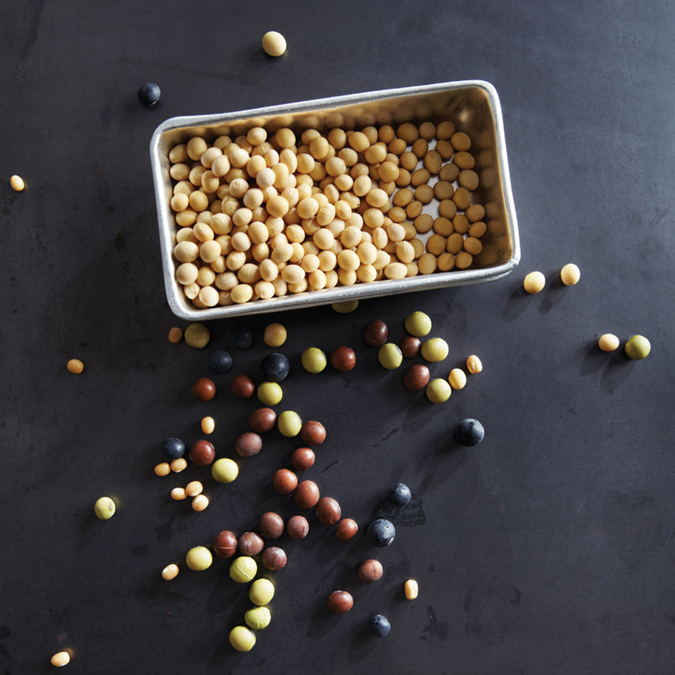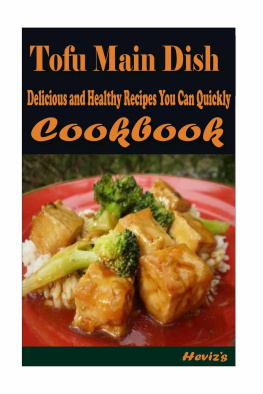

Text and location photography copyright 2012 by Andrea Quynhgiao Nguyen
Studio photographs copyright 2012 by Maren Caruso
All rights reserved.
Published in the United States by Ten Speed Press, an imprint of the Crown Publishing Group, a division of Random House, Inc., New York.
www.crownpublishing.com
www.tenspeed.com
Ten Speed Press and the Ten Speed Press colophon are registered trademarks of Random House, Inc.
With the exception of the photographs listed below, all others are studio photographs by Maren Caruso or location photographs by Andrea Nguyen.
Photographs (top left) courtesy Karen Shinto
Photographs courtesy Lillian Chou
Photographs courtesy Linda Lim
2005 LA Tofu Festival poster, , courtesy Rodney Hom and Robby Djendrono
2006 LA Tofu Festival poster, , courtesy Little Tokyo Service Center
Library of Congress Cataloging-in-Publication Data
Nguyen, Andrea Quynhgiao.
Asian tofu / Andrea Nguyen ; photography by Maren Caruso. 1st ed.
p. cm.
Includes bibliographical references and index.
Summary: A guide to making and cooking tofu, with nearly 100 horizon-expanding recipes from one of the countrys leading voices on Asian cuisineProvided by publisher.
1. Cooking (Tofu) 2. Tofu. 3. Cookbooks. I. Title.
TX814.5.T63N48 2012
641.65655dc23
2011041480
eISBN: 978-1-60774-203-6
Food styling by Karen Shinto
Prop styling by Dani Fisher
v3.1
CONTENTS
FRESH AND SATISFYING
Snacks and Starters
Naked and Simple
Grilled and Fried
Creative and Modern
SOOTHING AND SOFT
Soups and Hot Pots
Casual and Special Soups
Warming Hot Pots
HOMEY AND WHOLESOME
Main Dishes
Stir-Fried, Panfried, and Braised
Deep-Fried and Roasted
Poached, Simmered and Steamed
VERSATILE AND DELICIOUS
Salads and Sides
Tossed
Sauteed, Stir-fried, and Simmered
RELIGION AND ARTISTRY
Mock Meats
BUILDING ON TRADITIONS
Buns, Dumplings, Crepes, Noodles, and Rice
AMAZING TRANSFORMATIONS
Sweets and Dessert
Solidified, Squeezed, and Grated
Byproduct Bonuses

INTRODUCTION Despite all the terrible terms that have been attached to tofu, it is still considered a good four-letter word by countless people. As an Asian staple, it is beloved by rich and poor alike. Whether fresh and tender or aged and fermented, tofu denotes basic sustenance, culinary craftsmanship, time-honored traditions, good health, and more. Tofu pervades many aspects of Asian life and culture, as I discovered during my travels and research for this book.
For example, visit a country in East or Southeast Asia and youll see tofu practically everywhere, on restaurant menus, as street food, and at cafeterias. You can buy it from open-air (wet) food markets and neighborhood tofu shops as well as fancy food halls and superstores such as Walmart and Carrefour. Small packages of tofu snacks are often displayed as impulse buys at Chinese hypermarkets.
There are even ample opportunities for tofu tourism. A popular excursion from Taipei is to The Capital of Tofu in Shenkeng, renowned for its tender tofu and old-fashioned methods, such as cooking the soy milk over wood charcoal for a light smokiness. Under the archways that line the charming Old Town area, vendors sell a variety of tofu, including tofu ice cream, grilled stinky tofu on a stick, and salty-sweet fermented tofu.
Among the highlights of visiting Kyoto are elaborate multicourse tofu meals and tofu shops that date back to the 1800s. Tokyo offers elegant tofu fine dining restaurants, but in the outer stalls of the Tsukiji market, youll come across the twenty-something Table-Mono tofu vendors hawking super rich soy milk, tofu, and ice cream to passersby.
Tofu is featured in many Asian cookbooks but it has also been spotlighted in comic books and childrens books. It has inspired artists and designers to create posters, sculptures, and even tofu MP3 speakers and lamps! Few other foods can rival tofus significance to so many people.
East Asian Stronghold
While people agree that tofu is an ancient food, no one is clear on when it was invented and by whom. Soybeans are native to China and were considered one of five sacred grains. As a primary foodstuff, the soybeans main virtues were its ability to grow well in poor soil without depleting the land, and its consistently high yield. The little bean was a useful famine food and the Chinese took to transforming it. Initially it was made into a type of gruel, and later into palatable staples such as soybean sprouts, soy sauce, and tofu.
Legend holds that King Liu An of Huainan invented tofu, and excavated tomb carvings point to tofu being made as early as the Han Dynasty (206 BCE220 CE). Scholars also suggest that the Han Chinese may have learned about rendering curds from milk through contact with nomads from the northern steppes. However, tofu did not catch on as a popular, commercially made food until the tenth century, when the Mandarin term dou fu (tofu) was mentioned numerous times in literature.
It was from the Song Dynasty (9601279 CE) onward that tofu spread to other parts of the region. Wherever the Chinese exerted their influence, whether through religion, politics, or trade, tofu went with them. Thats why so many Asian tofu dishes are Chinese in origin.
How tofu knowledge flowed from China to other cultures, however, is murky. For example, monks and scholars traveling between China and Japan may have transmitted tofu culture to Japan between the eighth and twelfth centuries. It was first mentioned in Japan in 1183 as a Shinto shrine offering, but the characters as we know them today were not written in Japan until 1489. What is generally agreed upon is that tofu was not part of everyday Japanese eating until the middle of the Edo Period (16031868). Some support the theory that the Japanese learned about tofu from the Koreans, as a result of the Japanese invasions of Korea between 1592 and 1598. In any event, Japan took to tofu in a big way, evidenced by the 1782 bestseller Tofu Hyaku Chin by Ka Hitsujun. Among the books one hundred tofu recipes are enduring classics, such as hiya yakko (.
Korea and China share a border, and tofu was likely introduced to Korea in the thirteenth and fourteenth centuries. Historic records show that it even played a role in diplomacy. In 1434, as part of their tribute relationship, the Chinese emperor requested Korean cooks skilled at making dubu (tofu) preparations. By the fifteenth century, tofu had indeed become widespread in Korea, though it was mostly made by Buddhist monks as temple food. It was part of an annual ceremony to memorialize the deceased, a practice that continues today.














